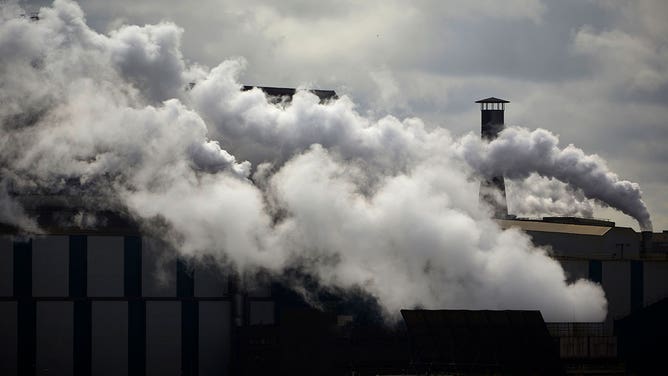6 reasons the air you're breathing today is much cleaner than it was 50 years ago
Ozone levels have dropped by more than 30% since 1980, according to EPA

Fumes from the Tata Steel plant are seen on August 20, 2021 in Wijk aan Zee, Netherlands.
(Pierre Crom/Getty Images)
Despite population growth, urban sprawl and more vehicles on the roads, getting a breath of fresh air is much easier today than it was five decades ago.
According to the Environmental Protection Agency’s annual report, carbon monoxide levels have dropped by 81% since 1980, ozone levels have dropped by more than 30% since 1980 and particulate matter in the air has dropped by 41% since 2000.
Air quality plays a huge role in your health, according to Joost de Gouw, a chemistry professor at the University of Colorado Boulder and a fellow at the Cooperative Institute for Research in Environmental Sciences.
"Air quality is globally responsible for 4.2 million premature deaths every year, and since COVID, we have a better understanding of these large numbers," de Gouw said. "This turns out to be almost exactly the number of people who have died thus far from COVID. So, it's a very large number."
Let’s take a closer look at why the air quality has improved so much over the past several decades.
1. Clean Air Act
Since the passage of the Clean Air Act in 1970, the U.S. has stepped up efforts to monitor and control air pollution. This had led to drastic improvements in the quality of the air we breathe. The law allowed for federal regulators, which would later become the EPA, to establish national air quality standards for several well-known air pollutants and enforce those standards.
"The Clean Air Act has been so successful that the concentrations of nitrogen dioxide, sulfur dioxide, carbon monoxide and lead — they are, basically, everywhere below the limits," de Gouw said.
2. Technology
As with most big improvements in our lives these days, technology has played a large role in the overall improvement of air quality across the country.
In 1990, amendments to the Clean Air Act allowed for technology to be used to monitor and regulate air quality.
"That really has led to a lot of improvements in motor vehicles," said de Gouw. "Catalytic converters are greatly helping to reduce emissions. Industrial sources are controlled and also power generation, electric power generation. The emissions from those have been greatly reduced, and all of these things together have made a tremendous difference."
Improvements in that technology have led to an even better understanding of air pollutants and the risks they pose to people.
"In my own research, I use mass spectrometry, and if I compare what we can do today with what we did 20 years ago, we can see so many more different pollutants in the air than we used to be able to," de Gouw said.
3. Measurements from space
In the same vein as technological improvements, the ability to measure air pollution from space has also played a big role in the reduction of air pollution in the U.S.
"These days, there are several instruments that are orbiting the globe, and they give us the global distribution of air pollution every day," de Gouw said. "This has been super helpful to get data for areas where we're not measuring on the ground."
4. Cheaper sensors
Cheaper doesn’t mean shoddy here. In this case, it means air quality sensors have become less expensive and are allowing the general public to take measurements from their backyards. According to de Gouw, that data can then be shared with regulators.
"These maps that are really served by data from people are really a great tool to see where, for instance, wildfire smoke is more prevalent," de Gouw said.
5. Catalytic converters and filters
Motor vehicles are one of the largest sources of air pollution, making them ripe for improvements aimed at reducing the number of pollutants they put in the air.
"Catalytic converters on motor vehicles, particle filters on diesel trucks, have made a huge difference," de Gouw said. "If it were up to me, I'd give the engineers who developed these catalytic converters the Nobel Prize, because they've really saved a lot of lives worldwide."
Factories are also another huge source of air pollution, which has led to the creation of filters on smokestacks to trap pollutants before they reach the air.
6. Swapping coal for natural gas
According to de Gouw, power plants have made big improvements in the type of fuel that is used to generate electricity.
"Our coal-fired power plants have switched over to natural gas, and that's a much cleaner fuel in terms of air quality," de Gouw said. "That has also made a large difference."